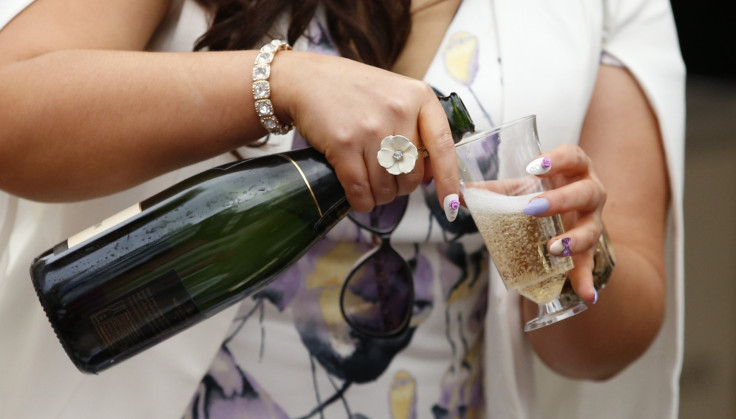
New Year’s Eve is almost here and if you’re attending any kind of social gathering to ring in the New Year, chances are someone is going to make a toast. But just what are the do’s and don’ts of toasting?
According to Sharon Schweitzer, a cross-cultural and international etiquette expert to current and future leaders within Global 2000 and Fortune 50 companies, champagne was traditionally served at the coronations of French kings and has historically been associated with christenings, new beginnings, and rare moments, including New Year’s Eve festivities around the world. The art of toasting to one’s health can be attributed to the Greek culture. In Ancient Greece the hosts took the first sip of communal wine to assure their guests that the drink was not poisoned.
Ever wondered why some people clink glasses together when toasting? "In early Christian times, people believed that the devil entered the body when people swallowed alcohol but could be deterred by bells chiming," Schweitzer said. "To ward off the devil, guests would clink their glasses together to make a bell-like sound with every guest present. Today, modern manners do not require clinking glasses with every guest, which is cumbersome and distracting. Smiling and making eye contact is a gracious way to toast."
The word “toast” originated from the Roman practice of placing a piece of spiced, charred bread in wine to mellow the flavor. When drinking to someone’s health, the cup was always drained to reach the saturated toast at the bottom. Worldwide, many cultures toast in one form or another. Wishing others a "Happy New Year" is one of the most common toasts made on New Year’s Eve.
Sharon Schweitzer shared with Latin Times the following toasting tips you might want to know before your New Year's Eve party:
- First Toast: In light of their planning, and financing, the host or hostess of the dinner or social party offers the first toast. At an informal dinner party or table of friends, however, a guest can propose the first toast to thank the host for organizing the event or gathering.
- To Clink or Not? Today it’s not necessary. You may choose to clink your glass, or not. Avoid making others uncomfortable by refraining from comments like “I don’t clink.” Etiquette is about others feeling comfortable in your presence.
- Observing Toast Boundaries: In the U.S., New Year’s Eve toasts are extremely brief, sometimes 10-15 seconds; occurring with much fanfare at midnight. If you don’t want to be kissed by strangers, stay close to your date, extend your hand for a handshake, provide your cheek for an ‘air-kiss’ or excuse yourself before midnight.
- Champagne Bottle Opening: There is a proper way to open a bottle of champagne to avoid the spray, injuring someone with the cork, or spilling a precious drop. Hold the bottle at a 45-degree angle while grasping the champagne cork gently with the one hand, and turn the bottom of the bottle firmly with the other hand. Be sure to twist the bottom of the bottle slowly, until you feel the cork gently release in your hand.
- Non-alcoholic toasts: Toasting is about the sentiment of the occasion, not the liquid in the glass. Some guests refrain from consuming alcohol for health and medical reasons. People undergoing medical treatment, in recovery, or taking certain prescription medication cannot take even “just one sip.” It is impolite to insist that they do, because they can still acceptably join in the toasting with a sparkling beverage, ginger ale, club soda, seltzer, or juice. If you do not drink and are offered an alcoholic beverage, simply say ‘no thank you.’
© 2025 Latin Times. All rights reserved. Do not reproduce without permission.






